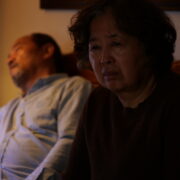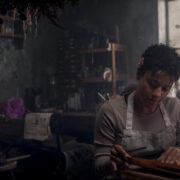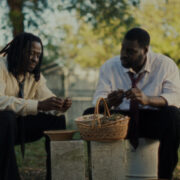BOMB CITY: Rage Against Violence
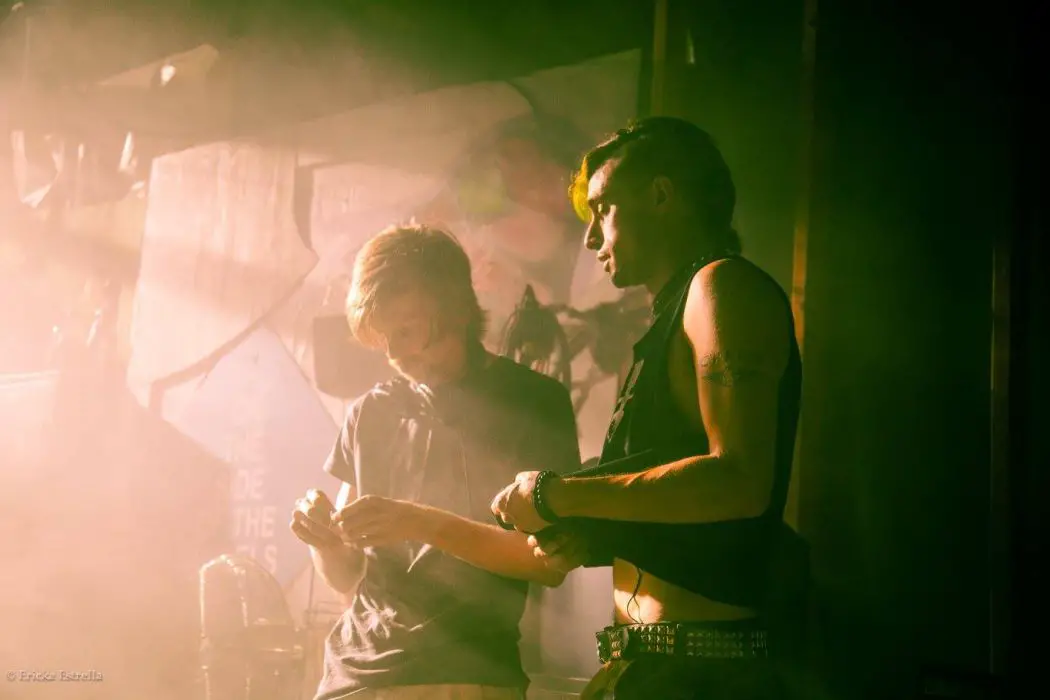
Alex is a film addict, TV aficionado, and book lover.…
Violence and hate continues to permeate American culture, which is perhaps why the unbridled fury of Bomb City feels so timeless. You don’t notice that it’s set twenty years ago because the scenario that unfolds still plays out today: two groups misunderstand each other and fight until they do something irreversible, forcing everyone to look at the deeply rooted cultural issues that caused the conflict in the first place.
In this case, the irreversible event was the death of Brian Deneke, a 19-year-old member of the punk scene in Amarillo, Texas. The feud was amongst the teenagers of the city, with jocks on one side and punks on the other. The thing is that this scenario was not invented by the writers of Bomb City; they lifted it straight from real life. Deneke really was struck by a car and killed during a fight in 1997, and the subsequent trial of 17-year-old Dustin Camp drew national attention.
The film uses this as an opportunity to reflect on America’s increasingly polarized culture, and while its aims are worn quite plainly, it makes up for its bluntness with some eye-popping style. Co-writer and director Jameson Brooks announces himself as a newcomer to watch with this feature debut, making the film about much more than one man’s death.
Humanizing The Players
Deneke, played pitch-perfect and with great charisma by Dave Davis, is the main focus of Bomb City, but many friends and foes swirl around in this large ensemble. Each is given enough time and shading to make them stand out as individuals in what seems to be a direct argument against the trail and subsequent media coverage’s reduction of them to jocks or punks. It’s the crux of the film, really, to show them as regular people caught up in a pointless conflict, and it’s in these moments that the film excels.
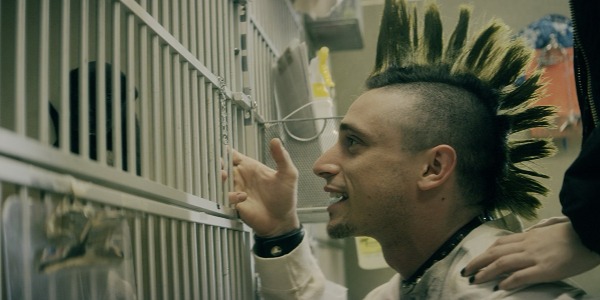
Brooks and co-writer Sheldon Chick are careful not to portray any of these characters as entirely good or bad, with each social circle having its reckless fun, camaraderie, and troublemakers. To go a step further, they even draw parallels between the preferred activities of the two groups, with an early intercut scene jumping seamlessly between a moshing concert and a football game.
Unfortunately, the film doesn’t quite achieve parity in depicting the two groups. The jocks are far less sympathetic with their consequence-free antics and white dude with cornrows villain, and the film could use more time filling out Camp’s psyche leading up to the big fight. Still, it’s hard to argue that the camera should be pointed anywhere but at Davis, who exudes a tough sweetness whether his hair is stiffly upright or stringing down over his face. His Deneke is not a perfect young man (no one in this production loses sight of that), but the character’s jagged edges makes for a fitting tribute to the real life that was lost.
Engaging But Excessive Style
The early intercut scene I already referenced is the first in a long line of impressive moments that Brooks and his team pull off, with the film taking on a low budget beauty reminiscent of 2011’s Bellflower. Both of these films deal quite extensively with male posturing and the ugliness of violence, but the events leading up to their dark turns are presented with a certain grubby coolness.

With Bomb City, this is largely accomplished through oversaturated colors, lens flares, and the constantly roaming camera. In fact, the flares are so common that you might start having flashbacks to J.J. Abrams’ Star Trek films.
These flourishes make the big moments pop quite memorably, but there’s a lack of restraint to their use. Smaller scenes, like when Deneke is speaking one-on-one with his girlfriend, would feel more intimate without the filmmaking constantly announcing itself. It becomes a bit distancing for these elements to always be there, never allowing the audience to fully immerse themselves in the events taking place.
Show Don’t Preach
Every bit of Bomb City is aware of its current resonance, how the ramifications of mistrust and shallow judgments led to a tragedy that no one seemed to learn from. Its point is made through spending time with the abrasive but good-hearted Deneke and the romantic fumblings of Camp, and when the audience is allowed to extrapolate the meaning of these small moments themselves the film achieves the profundity it’s aiming for. But just as often the writers do the work for the audience, and when these mechanisms kick in, there’s always a clunk.

The biggest offender is how the film cuts back and forth between the lead-up to the fatal encounter and the subsequent trial, and while this is effective in keeping the audience aware of the event we’re barreling towards, it takes on a jarringly preachy tone. Everything that is established by following these teens’ lives is stated outright under the bright lights of the court, making these scenes far less interesting because of it. And I mean bright lights literally; the contrast between the teens’ largely nocturnal antics and the overly lit courtroom is stark.
A smaller choice must also be mentioned, because while the time spent on Deneke and his girlfriend adopting a puppy is brief, it’s such a cliché to curry audience sympathy through doggy love that it’s almost laughable whenever it occurs. It’s as big a misstep here as it was in Fruitvale Station, but hey, Ryan Coogler took that feedback well, so hopefully Brooks will recalibrate his idea of subtlety, too.
Bomb City: Conclusion
Bomb City plucks a tragedy from the history books and brings it vibrantly back to life. An excellent central performance from Dave Davis and the promise of director Jameson Brooks makes this a noteworthy film for anyone hoping to discover fresh talent, but even those just looking for a good individual film will find this satisfying. It makes an impassioned statement in a sometimes messy way, but the energy it gives off is far more effective than any staid, overly safe version of this story could ever be.
Were you moved by this take on a real-life event? Let us know in the comments!
Watch Bomb City
Does content like this matter to you?
Become a Member and support film journalism. Unlock access to all of Film Inquiry`s great articles. Join a community of like-minded readers who are passionate about cinema - get access to our private members Network, give back to independent filmmakers, and more.
Alex is a film addict, TV aficionado, and book lover. He's perfecting his cat dad energy.


